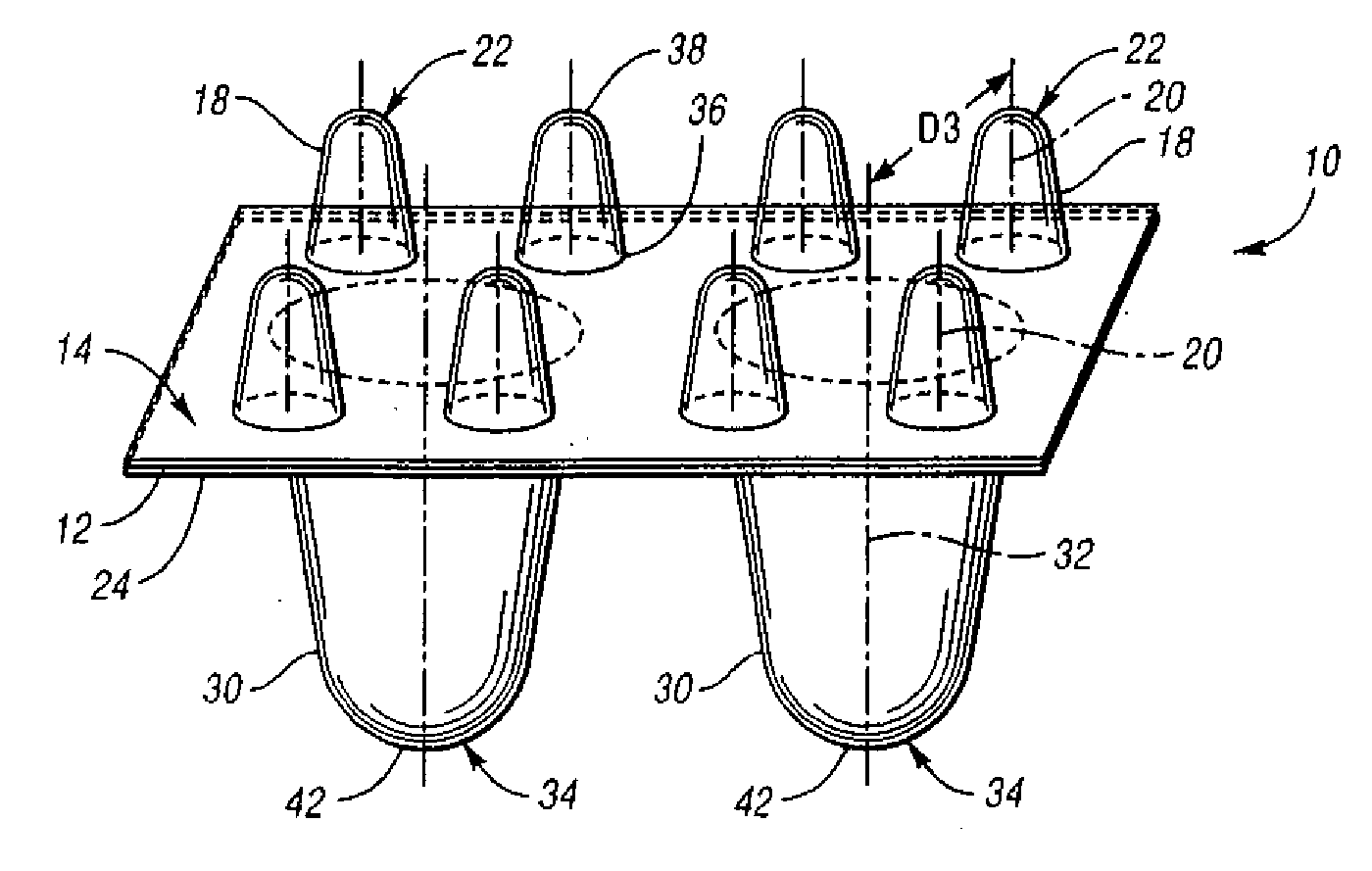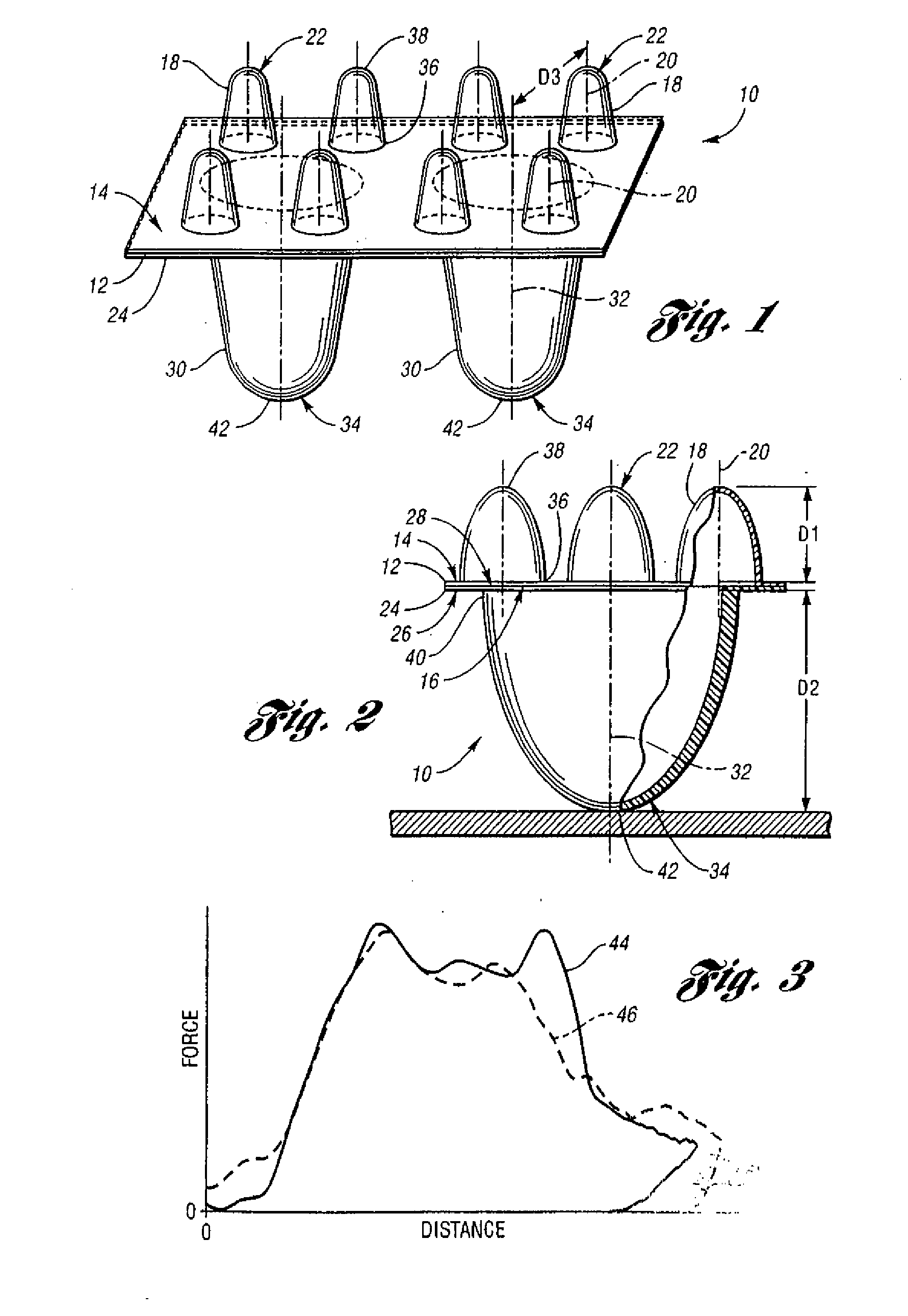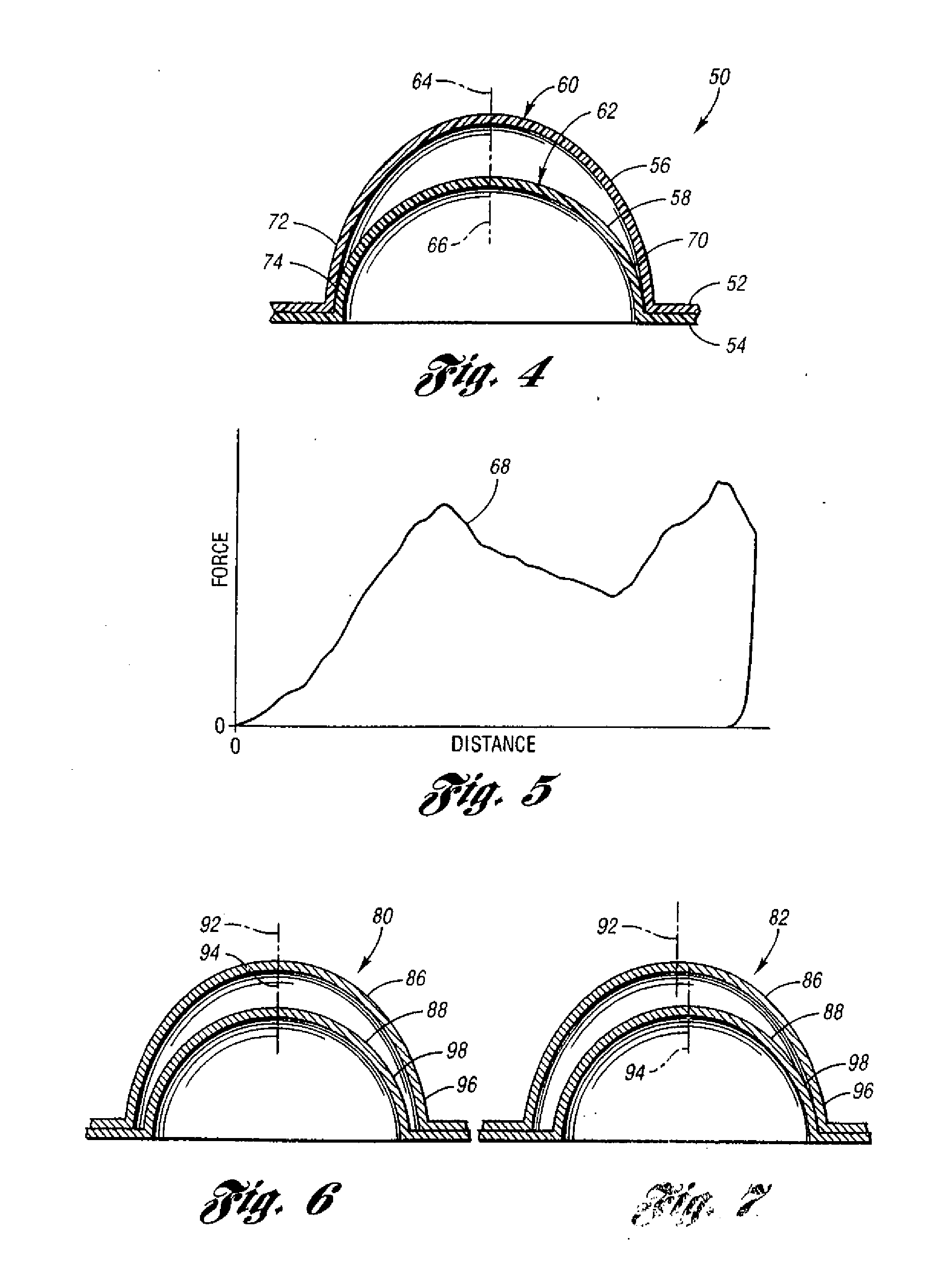Energy-absorbing padding with staged elements
a technology of energy-absorbing padding and staged elements, which is applied in the direction of vibration dampers, doors, mechanical equipment, etc., can solve the problems of initial stress and peak loading that may exceed design objectives, and achieve the effect of avoiding both the initial stress and initial stress peak, regulating the energy-absorbing capacity of padding, and improving occupant protection
- Summary
- Abstract
- Description
- Claims
- Application Information
AI Technical Summary
Benefits of technology
Problems solved by technology
Method used
Image
Examples
Embodiment Construction
[0021] Referring to FIGS. 1 and 2, a first exemplary energy-absorbing padding 10 for a motor vehicle, for example, adapted to be installed within a vehicle door beneath a “skin” of interior trim (not shown), includes a first or upper base layer 12 having a first face 14, a second face 16, and a plurality of integrally-formed, hollow, first or upper elements 18 projecting from the upper base layer's first face 14 along a first axis 20 to thereby define convex impact surfaces 22 disposed a first distance D1 from the first face 14 of the upper base layer 12. The first padding 10 further includes a second or lower base layer 24 also including a first face 26, a second face 28, and a plurality of integrally-formed, hollow second or upper elements 30 projecting from the lower base layer's first face 26 along a second axis 32 to thereby define convex impact surfaces 34 on the lower layer 24 disposed a second distance D2 from the lower layer's first face 24. The second distance D2 is signif...
PUM
 Login to View More
Login to View More Abstract
Description
Claims
Application Information
 Login to View More
Login to View More - R&D
- Intellectual Property
- Life Sciences
- Materials
- Tech Scout
- Unparalleled Data Quality
- Higher Quality Content
- 60% Fewer Hallucinations
Browse by: Latest US Patents, China's latest patents, Technical Efficacy Thesaurus, Application Domain, Technology Topic, Popular Technical Reports.
© 2025 PatSnap. All rights reserved.Legal|Privacy policy|Modern Slavery Act Transparency Statement|Sitemap|About US| Contact US: help@patsnap.com



